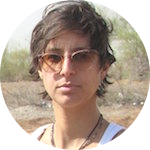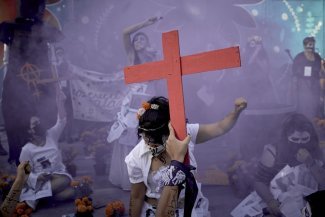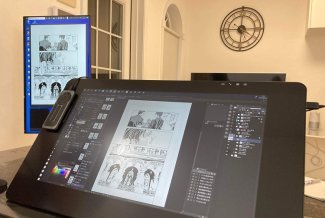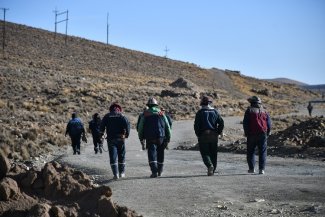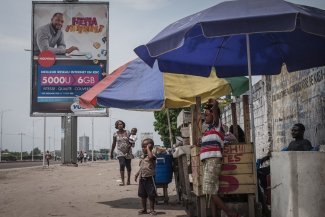A four-hour drive from the site of the recent UN climate conference in Marrakech is the Noor solar thermal plant. Part of Morocco’s plan to generate more than 40 per cent of its electricity from renewable energy sources, on completion it will become the world’s largest solar plant. Noor’s director calls the project a “green megawatt.” Critics, however, are calling it a “green grab.”
“Morocco is visionary,” says chief executive Paddy Padmanathan of ACWA Power, the Riyadh-based company that owns Noor. “Over the next seven years we will fill the domestic needs, but there will be a huge opportunity for Morocco to become a net exporter of energy over the next decade – no question of that.”
The project is financed by loans of US$519 million from the World Bank and €654 (US$690) million from German state-owned bank KFW. The African Development Bank, the European Commission and the European Investment Bank have also provided financial support.
Noor lies 20 kilometres north of the city of Ouarzazate, which the local Berber population call the “door of the desert.” But with water becoming ever-more scarce – thanks in part to global warming – and the land acquired at just a few cents per square metre for 32 square kilometres of land, locals see the project as unfair to them.
“No renewables project is automatically sustainable itself. It does not lead automatically to equitable and sustainable outcomes for the people,” suggests Boris Schinke, a senior advisor on energy and development for the NGO Germanwatch.
Lack of community engagement
Schinke led a three-year studyassessing the livelihood dimension of the Noor solar plant. Hundreds of interviews were conducted and extensive discussions took place with the affected communities.
The main problem, Schinke’s team found, was the lack of community engagement, and of prior, informed consent. There was also criticism of working conditions, an education-labour market mismatch and issues with the land acquisition process.
“Renewable energy projects need community acceptance at a local level to make them successful, otherwise people will oppose it and could sabotage it. Clearly, the Noor project is no panacea. It is just an infrastructure project which cannot solve all development needs of the region,” Schinke tells Equal Times.
Yet, compared to the alternative – the building of fossil fuel plants elsewhere in the country – the Noor project is still Morocco’s best option, he opines.
The study was carried out jointly with the Wuppertal Institute and supported by the German Bonn International Centre for Conversion, the Moroccan research institute and consultancy MENA Renewables and Sustainability, and L’Association Draa des Énergies Renouvelables.
“Our approach was to make sure these projects were really built to the benefit of North African people and not only to serve foreign interests,” says Schinke.
Hamza Hamouchene, a London-based human rights and environmental activist from Algeria, has spoken out against the negative social impact of mega power projects. In his report The Struggle for Energy Democracy in the Maghreb which was published by Rosa Luxemburg Stiftung last June, Hamouchene called for changes.
“It seems that the production of energy from the sun will not be different and will be controlled by multinationals only interested in making huge profits at the expense of sovereignty and a decent life for Moroccans,” Hamouchene wrote in a recent articlefor the Arab Studies Institute.
Hamouchene also questioned the sustainability of such projects, particularly with regards to water.
“The biggest issue with this technology is the extensive use of water that comes with the wet cooling stage. In an arid region like Ouarzazate, this appropriation of water for a supposedly green agenda constitutes a green grab, which will intensify ongoing agrarian dynamics and livelihood struggles in the region,” he concluded.
A huge step
Noor forms a major part in Morocco’s plans for a US$13 billion expansion of its wind, solar and hydroelectric power generation capacities. By 2020, the country’s share of renewable energy sources could increase to 42 per cent,.
That would massively reduce Morocco’s dependency on fossil fuels. It is a huge step for this country of 34 million people, which is ranked 126 (out of 188) in the Human Development Index, together with Namibia and right after countries like Iraq and Nicaragua.
The solar complex is operated by a consortium led by NOMAC, a subsidiary of ACWA Power – a private company owned by eight Saudi conglomerates – and the Moroccan Agency for Solar Energy (Masen).
The first phase of the project, which is already in operation, involved the construction of a 160-megawatt concentrated solar power (CSP) plant named Noor I. Phase two consists of the 200MW Noor II and the 150MW Noor III plant, that will start operating by 2017 and 2018 respectively.
The final phase will see the construction of Noor IV, which will have a smaller capacity of up to 70 MW; all together, this is known as the Noor Concentrated Solar Power Project.
“Ever since the King (Mohammed VI) announced this project, people started to believe in the feasibility of the renewable energy,” says Schinke. “In the Ouarzazate region, you now see small scale photovoltaic energy projects on many roof tops as farmers are replacing their diesel-fired water pumps with solar energy.”
But for Noor, the lack of clear procedures on land acquisition has been a major obstacle.
The project developer conducted four rounds of consultations but only invited community representatives, and not citizens. “Here’s where the problem started,” Schinke says, adding that the language used during the consultation process was quite technical. Local citizens lacked information and understanding “which led to unrealistic expectations.”
A price of one dirham (US$0.09) per square metre was negotiated between the developer and the community leaders. But local citizens are frustrated because they do not know how the 32 million dirhams (US$3 million) paid for the land will be spent.
“Local citizens felt left out,” says Schinke. “So people now have the feeling they have lost their land. They are complaining about lacking procedural justice and a means of participatory governance in the Moroccan political system. In Morocco, it is not usual to involve people in a democratic manner and decisions are taken from top-down,” he says.
Schinke says that as a result of the bubbling community resentment – which resulted in protests during the construction phase – NOMAC has improved its community engagement process.
Water tensions?
But another critical concern is water management. The water that is pumped up from the nearest dam at Al Mansour Addahabi could be a potential source of conflict, says Schinke, as local households compete for water with the power plant.
The severe impact of climate change is projected for the years ahead in this already arid zone.
Rainfall is getting more erratic and temperatures are rising, leading to higher evaporation rates, provoking soil erosion and disrupting the refilling of the dams.
As a result, Schinke advises the close monitoring of water consumption at the Noor plant. As Morocco has not had any previous experience with a mega solar project of this scale, everyone is watching.
The success of this endeavour is crucial for the roll-out of similar projects in North Africa and other developing countries that aspire to explore green alternatives and reduce their fossil fuel dependency.


